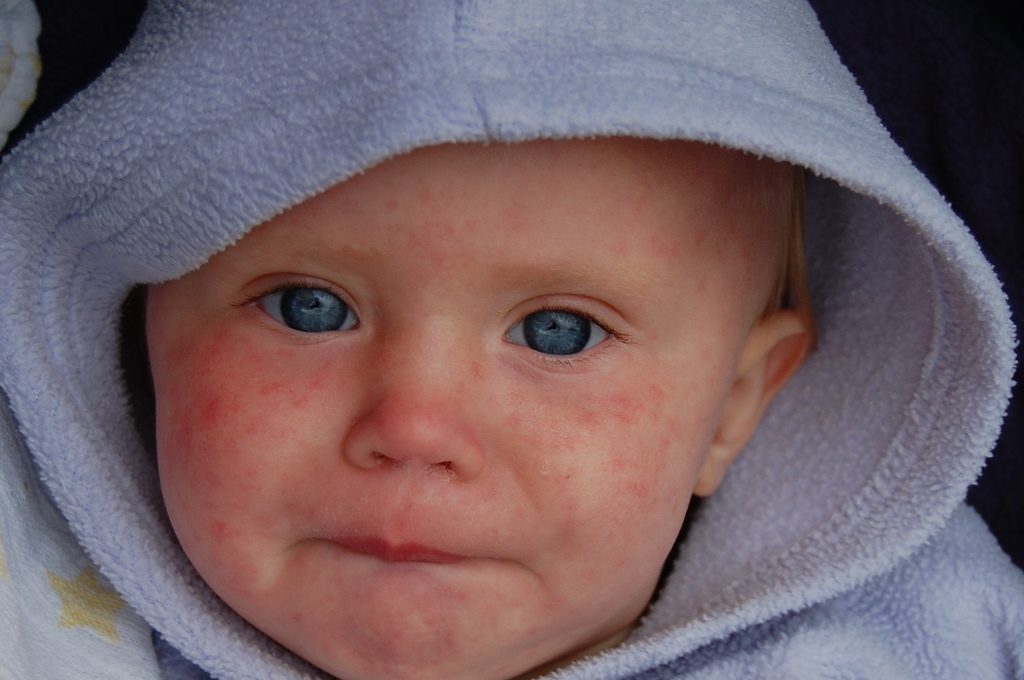Is the Washington/Oregon Measles Outbreak Among Fully Vaccinated Children?

Over 35 cases of measles reported around Portland, Oregon and in nearby Clark County, Washington have compelled Washington’s governor to declare a state of emergency. Really.
People are hysterical about a few cases of a disease that was normal and self-limiting just a few decades ago. Pop culture references like these would be forbidden today:
To be clear, measles can be fatal, but for the vast majority of people it is a mild, self-limiting disease. The Mayo Clinic describes symptoms as:
- Fever
- Dry cough
- Runny nose
- Sore throat
- Inflamed eyes (conjunctivitis)
- Tiny white spots with bluish-white centers on a red background found inside the mouth on the inner lining of the cheek — also called Koplik’s spots
- A skin rash made up of large, flat blotches that often flow into one another
Are the kids stricken with measles vaccinated?
The official tally from Clark County Public Health Department is:
- Age
- 1 to 10 years: 34 cases
- 11 to 18 years: 13 cases
- 19 to 29 years: one case
- 30 to 39 years: one case
- Immunization status
- Unimmunized: 42 cases
- Unverified: six cases
- 1 MMR vaccine: one case
- Hospitalization: one case (none currently)
Some are eyeing an immigrant community in Vancouver, Washington for the initial case: “Some of them says we don’t want to take a shot … after that so because some kids infected after shots,” one of the members explained.
The area in general has a higher-than-normal rate of vaccine exemption. According to Seattle Times, state data shows that 7.9 percent of children in Clark County were exempted in the 2017-18 school year from vaccines required for kindergarten entry, which includes the two-dose course for measles that the Centers for Disease Control and Prevention says is 97 percent effective. Only 1.2 percent of the children had a medical dispensation, meaning that nearly 7 percent were not immunized for personal or religious reasons.
The concept of herd immunity is that if enough people are immunized against a disease, the entire population—including immunocompromised people—should be able to avoid the disease. But Clark County’s numbers aren’t too far off from the 95 percent level to ensure herd immunity. What’s worse is that in recent outbreaks, fully vaccinated children were getting sick, as Dr. Gregory Poland explained in a 2012 paper: during the 1989-1991 U.S. outbreaks, 20 percent to 40 percent of those affected had received one to two doses. In a 2011 outbreak in Canada, “over 50 percent of the 98 individuals had received two doses of measles vaccine.”
The problem is that between 2 percent and 10 percent don’t develop expected antibodies after receiving the recommended two shots and even when the vaccine takes, the protection quickly wanes.
Poland thinks the answer lies in our genes: because of their genetic predisposition, some people will not respond to the current measles vaccine, even with additional boosters. By the same token, the genetic predisposition of others makes them susceptible to harm from the measles vaccine, leading to public wariness, including among the well educated. What is needed is for the public health establishment to accept that the current measles vaccine has so many drawbacks as to make it unworkable, and get on with the job of developing next-generation vaccines.
For the record, Dr. Poland is decidedly pro-vaccine, often lashing out against the “irrationality of the antivaccinationists,” but he has addressed the serious issues with the one-size-fits-all vaccination program in the US. His team recommends :
-
Abandon a one-size (and dose) –fits-all vaccine approach for all vaccines and all persons
-
Predict the likelihood of a significant adverse event to a vaccine
-
Decide the number of doses likely to be needed to induce a sufficient response to a vaccine
-
Design and develop new vaccines and studies to prove their efficacy and safety in such a way as to begin to use them in an individualized manner
-
Identify approaches to vaccination for individuals and groups (based on age, gender, race, other) based on genetic predilections to vaccine response and reactivity
We agree. We would also add “lightening up a little” and watching a little ’70s television.
Perspective from the comments:
Finley Harrison posted:
Measles before vaccination: 0.0001286 deaths per case of measles (450/3.5m) and 0.0002857 case of encephalitis per case of measles (1000/3.5m https://www.cdc.gov/measles…
MMR in the last 10 years:
68 cases where Vaccine is MEA or MER or MM or MMR or MMRV and Patient Died and Vaccination Date on/after ‘2009-01-01’ Age: <3 (http://www.medalerts.org/va… 389 encephalitis/brain damage“with less than one percent reported to the Food and Drug Administration (FDA)” https://healthit.ahrq.gov/a… Let’s use a liberal 5% reported which gives us 1360 deaths or 136 per year; 778 cases of encephalitis.
Vaccination rate: ~3.9m 1-year-olds at ~91% (https://www.statista.com/st… = 3549000 doses.
Deaths per vaccination: .000038
Encephalitis per vaccination: .0002192VICP pays out about 38% of the claims for measles vaccine injury (https://www.hrsa.gov/sites/… . That leaves you with 0.00001444 deaths and 0.0000833 cases of encephalitis per vaccine.
According to these calculations, you’re looking at a 0.01286% chance of dying from measles and a 0.001444% chance of dying from measles vaccine. Again, I think the measles mortality rate would be lower today than in the 1950s even without vaccination.







